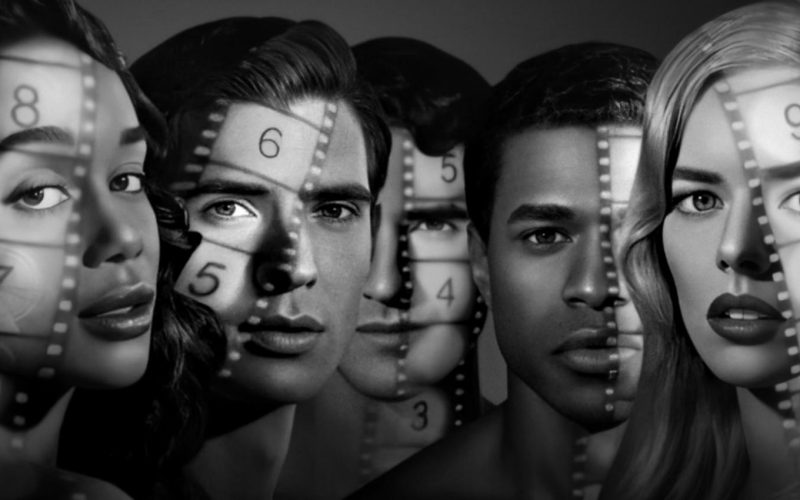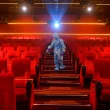Introduction
Diversity has always been a crucial element of storytelling, reflecting the myriad of human experiences and perspectives. In recent years, the conversation around diversity in modern cinema has gained significant traction. Filmmakers, actors, critics, and audiences alike are recognizing the importance of representation and inclusivity on screen. This article delves into the role of diversity in modern cinema, examining its impact on storytelling, industry practices, and audience reception.
Historical Context

To understand the current landscape, it’s essential to look back at the history of cinema. For much of the 20th century, Hollywood, the epicenter of global cinema, was dominated by a narrow representation of characters and stories. The industry was largely controlled by a homogenous group, leading to a predominance of white, male, and heterosexual narratives. This lack of diversity not only limited the types of stories told but also marginalized many communities.
However, there were always filmmakers and actors who pushed against these boundaries. From pioneering directors like Oscar Micheaux, who made films about African-American life in the early 1900s, to the rise of independent cinema in the latter half of the century, there have been continuous efforts to broaden the scope of representation.
The Shift Towards Inclusivity

The turn of the 21st century marked a significant shift towards inclusivity in cinema. Several factors contributed to this change:
-
Globalization
The global reach of cinema has expanded exponentially with the advent of digital technology and the internet. Films are no longer confined to their country of origin; they have the potential to reach a worldwide audience. This globalization has highlighted the need for diverse stories that resonate with different cultures and communities.
-
Social Movements
Movements such as Oscars So White and MeToo have played a pivotal role in bringing issues of diversity and representation to the forefront. These movements have not only raised awareness but have also put pressure on the industry to make tangible changes.
-
Economic Factors
Studies have shown that films with diverse casts tend to perform better at the box office. This economic incentive has encouraged studios to invest in projects that feature a broader range of characters and stories.
Representation Matters

The importance of representation in cinema cannot be overstated. Seeing oneself reflected on screen can have profound effects on an individual’s self-esteem and sense of belonging. For marginalized communities, representation can validate their experiences and provide a sense of visibility and recognition.
-
Cultural Impact
Films have the power to shape cultural narratives and influence societal attitudes. By showcasing diverse characters and stories, cinema can challenge stereotypes and promote empathy and understanding. For instance, films like “Black Panther” and “Crazy Rich Asians” have not only been commercial successes but have also sparked important conversations about race and identity.
-
Inspiration and Aspiration
Representation in cinema can inspire individuals to pursue careers in the industry. When people see actors, directors, and writers who look like them, it can motivate them to follow similar paths. This, in turn, can lead to a more diverse and inclusive industry.
Challenges and Criticisms

While there has been significant progress, the journey towards true inclusivity in cinema is far from complete. Several challenges and criticisms remain:
-
Tokenism
One of the primary criticisms is that of tokenism, where diverse characters are included in films merely to tick a box rather than to contribute meaningfully to the story. This can lead to shallow and stereotypical portrayals that do more harm than good.
-
Behind-the-Scenes Diversity
While on-screen representation is crucial, it’s equally important to have diversity behind the camera. Directors, writers, producers, and other key decision-makers play a significant role in shaping the narratives and ensuring authentic representation. The industry still has a long way to go in achieving this balance.
-
Market Pressures
Despite the economic incentives, market pressures can sometimes discourage studios from taking risks on diverse projects. There is still a perception that films centered around marginalized communities may not have universal appeal, leading to limited funding and support.
The Way Forward

To continue the progress towards diversity in modern cinema, several steps can be taken:
-
Education and Awareness
Educating industry professionals about the importance of diversity and the impact of representation can lead to more informed and conscious decision-making. Workshops, seminars, and training programs can be effective tools in this regard.
-
Supporting Independent Cinema
Independent films often lead the way in terms of diverse storytelling. Supporting indie filmmakers through funding, distribution, and promotion can help bring more varied stories to the mainstream.
-
Inclusive Policies
Implementing inclusive policies within studios and production companies can ensure that diversity is not just a buzzword but a fundamental aspect of their operations. This includes hiring practices, content guidelines, and support systems for marginalized voices.
Conclusion
Diversity in modern cinema is not just a trend; it is a necessary evolution that reflects the complexities and richness of our world. While challenges remain, the strides made in recent years are promising. By continuing to prioritize representation and inclusivity, the film industry can create a more equitable and enriching cinematic landscape for all.
The growth of diversity in modern cinema has not only enriched the stories being told but has also challenged the industry to think more broadly about whose voices are being amplified. By embracing inclusivity, modern cinema is evolving into a more dynamic, authentic, and globally relevant art form, one that promises to shape the future of film for generations to come.











